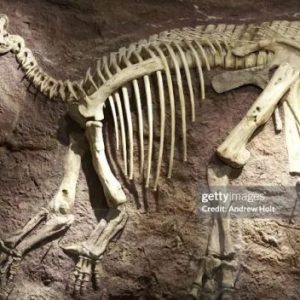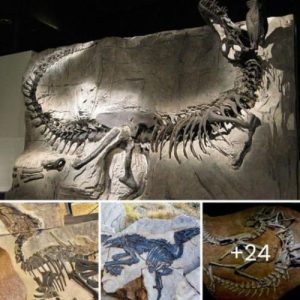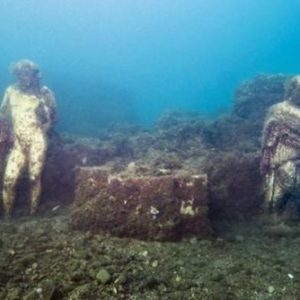
The deserts of Egypt may be the last place you’d expect to find traces of ancient marine life, but beneath the arid landscape lies a fascinating secret – the remarkable story of “Walking Whales.” These prehistoric marine mammals are a testament to the ever-evolving nature of life on our planet. In this article, we’ll delve into the extraordinary tale of how paleontologists have uncovered the remnants of these enigmatic creatures and the insights they provide into the evolution of life on Earth.
Unearthed Treasures in an Unexpected Place
In the vast expanse of the Egyptian desert, far from any hint of the ocean, researchers have made a series of remarkable discoveries. Fossilized remains of marine mammals dating back over 40 million years have emerged from the sands, rewriting the history of these ancient animals. Among the most significant finds are the fossils of early cetaceans, the group of mammals that includes whales, dolphins, and porpoises.
The Walking Whales
The term “Walking Whales” refers to a group of prehistoric cetaceans known as Basilosauridae. These creatures, although fully adapted to an aquatic lifestyle, retained vestiges of their terrestrial ancestry, allowing them to move on land. Fossils of Basilosaurids have revealed intriguing evidence of this evolutionary bridge between land and sea. These creatures, although not true “walkers” in the conventional sense, possessed limb structures that suggest they could support themselves on land, much like seals or sea lions do today.

The Evolutionary Link
The existence of Basilosaurids provides invaluable insights into the evolutionary journey of marine mammals. It tells us that the transition from land to sea was not a sudden leap but a gradual process, shaped by millions of years of adaptation. These ancient whales retained characteristics of their terrestrial ancestors while also acquiring specialized features that made them efficient swimmers. This duality is a testament to the power of evolution in sculpting life to suit its environment.
Discovering the Egyptian Treasures
Unearthing the fossils of Walking Whales in Egypt was no small feat. The painstaking work of paleontologists, combined with advancements in technology, has allowed us to piece together the puzzle of these ancient marine mammals. Researchers have scoured the desert, often braving harsh conditions, in search of these invaluable fossils. Advanced imaging techniques and laboratory analysis have enabled a more comprehensive understanding of these creatures’ biology and their place in Earth’s evolutionary history.
The Whales of Wadi Al-Hitan
One of the most famous sites for Walking Whales is Wadi Al-Hitan, often referred to as the “Valley of Whales.” This UNESCO World Heritage Site, located in the Western Desert of Egypt, is a paleontological treasure trove. It boasts numerous fossils of early whales and other ancient marine life, providing a glimpse into the environment and ecosystems of a bygone era. Visitors to Wadi Al-Hitan can witness the incredible fossils in their natural setting, bringing to life the story of these walking whales.

A Glimpse into the Past
Walking Whales offer us a unique opportunity to peer into the deep past of our planet and explore the remarkable adaptations that allowed life to flourish in environments as diverse as the ocean and the desert. They remind us of the complex, interconnected web of life on Earth and the ever-evolving nature of species. These discoveries are a testament to the dedication of scientists and the thrill of unraveling Earth’s history.
The revelation of Walking Whales in the Egyptian desert serves as a powerful reminder that our planet’s history is written in the rocks and fossils scattered across its surface. These ancient marine mammals, with their fascinating blend of terrestrial and aquatic adaptations, highlight the continuous journey of life through time.
The story of Walking Whales is a testament to the power of evolution and the resilience of life on Earth, demonstrating that even in the most unexpected places, the secrets of our planet’s history can be unveiled. As scientists continue to explore and study these remarkable fossils, we can look forward to further insights into the evolution of marine mammals and the dynamic history of life on Earth.







